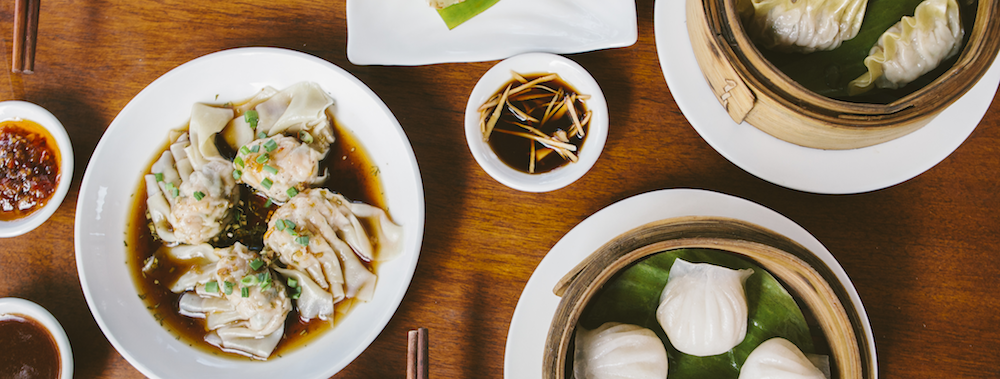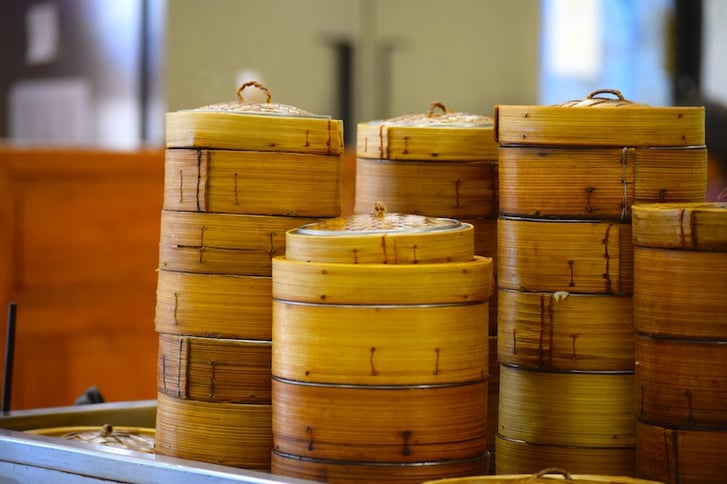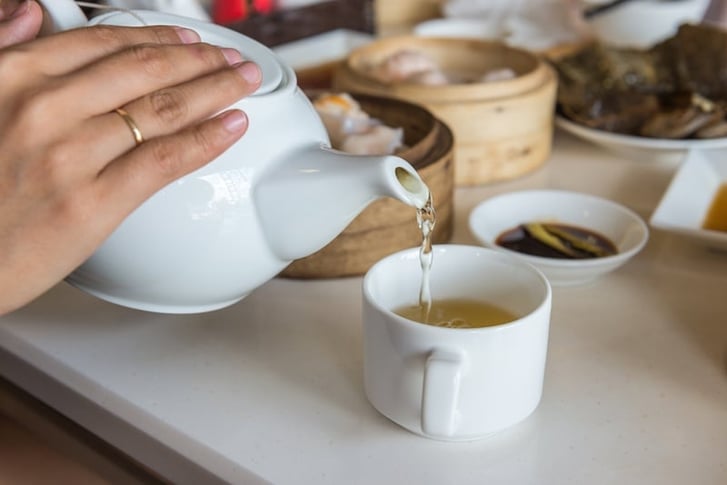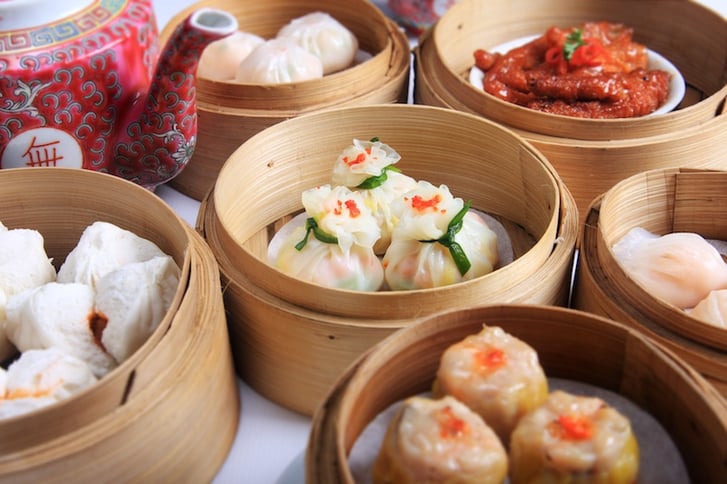
Dining at an authentic dim sum restaurant may be intimidating and confusing–especially for first-timers. But it doesn’t have to be. Follow these basic dim sum do’s and don’ts, and navigate Chinese brunch like a pro.
What Is Dim Sum?
Dim sum, which means ‘touch the heart’ in Chinese, is a unique culinary tradition that began thousands of years ago. In recent years, it has become increasingly popular in the Western world. Small, bite-sized snacks are served communal-style (usually from a cart) with as many as 150 Cantonese dishes to choose from, and nearly 2,000 dishes in total.
Drinking tea is as much a part of the ritual as the eating is–to such a degree, that dim sum has become inextricably linked with the phrase ‘yum cha’, or the act of drinking tea. For brunch or for lunch, with families or friends, as part of group get-togethers or co-worker outings, dim sum is a gathering of sorts centred around good food, hot tea, and great company. Cheers to yum cha.

How To Eat Dim Sum Like A Pro
- Tap the table with two fingers (pointer and middle) to say ‘thank you’ after someone at your table–not the waiter or waitress–has poured tea for you. It is a sign of deference and respect.
- Signal to your server for more tea by leaving the lid of the teapot ajar.
- Do not leave chopsticks standing up. This is a symbol of death and mourning. Instead, lay them horizontally on the edge of the plate.
- As a sign of respect, always pour tea for your companions first.
- Always move an item from the communal dish to your own before eating using a serving utensil or the top ends of your chopsticks. Do not eat directly from the steamer basket or shared plate.
- Dim sum is for sharing! Never lay claim to any one dish.
- Ask everyone at your table before taking the last piece of a dish.
- If you need to, request a fork from your waiter. Do not spear food with your chopsticks or use your hands (with the exception of large buns).

What To Eat At Dim Sum
Steamed, baked, pan-fried. Noodles, buns, dumplings. Not sure what to order? Menus are typically overwhelming and unusually long–so, take it from us. Stick with the Cantonese favourites:
- Shāo mài (siomai): a flower-shaped steamed dumpling filled with pork and shrimp
- Xiā jiăo (hargaw): steamed shrimp dumplings
- Shāo bāo: steamed buns filled with pork
- Cháng fĕn: rice rolls filled with pork or beef and dipped in soy sauce
- Pái gŭ: pork spareribs cooked in black bean or sour plum sauce
When it comes to dim sum, a good rule of thumb is: if you’re not sure what it is, try it. You’ll never be disappointed.

Want to experience dim sum like a true local? Uncover the hidden gems of Hong Kong & Taiwan on a guided local’s tour of the city.
For more destination inspiration, explore our Discover page: from Bangkok and Phuket to Myanmar and Singapore.
Enjoy your travels!
From the GLP team


